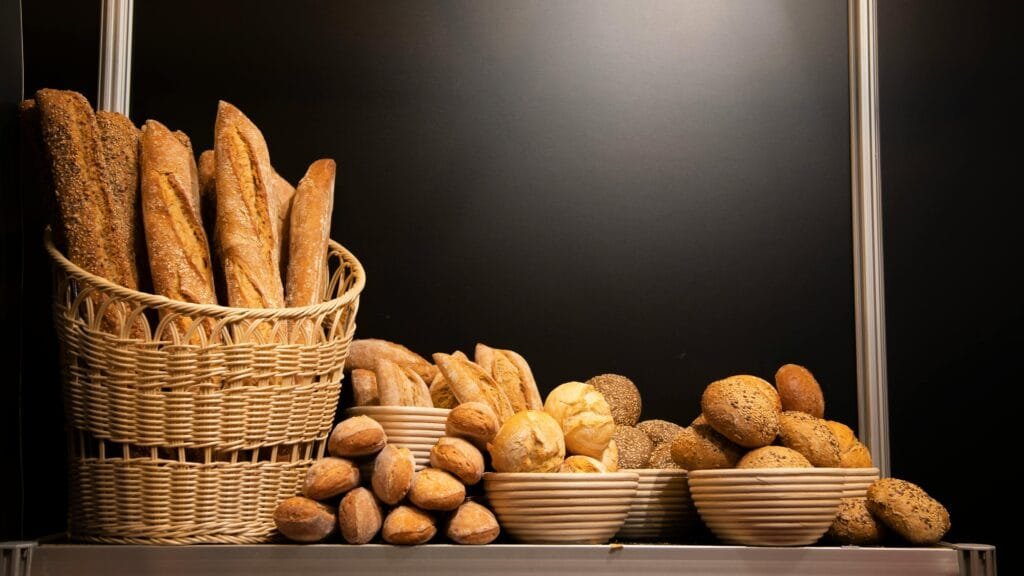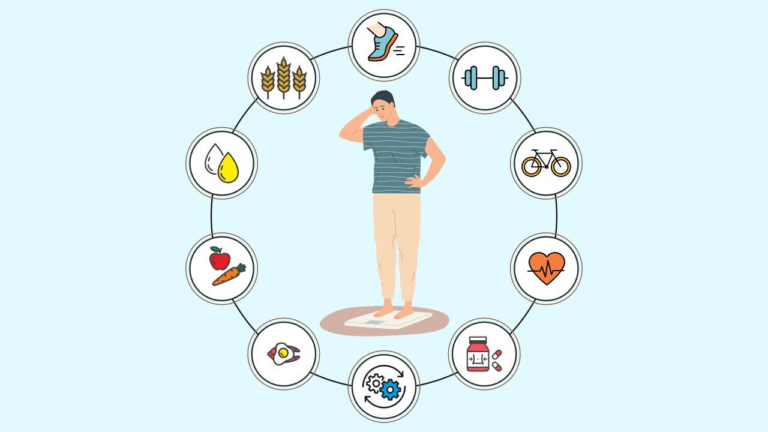Navigating the complexities of blood sugar management is crucial for overall health, particularly for individuals with diabetes or prediabetes. This comprehensive guide, brought to you by Dr. Sumaiya NutriCare Clinic, delves into the impact of various foods on blood glucose levels, providing evidence-based strategies and practical tips for maintaining optimal health.
Table of Contents
- Introduction: Understanding Blood Sugar and Its Impact
- Foods That Spike Blood Glucose
- Glycemic Index (GI) Table: Common Foods
- Glycemic Index (GI) Table: Common Indian Foods
- Managing Blood Glucose Through Diet
- Meal Planning Strategies to Lower Glycemic Load
- The Impact of Pairing Fats and Proteins with Carbohydrates
- Modifying High-GI Meals for Lower Glycemic Impact
- Ready to Transform Your Diet?
- Join Our Community
- Frequently Asked Questions (FAQ)
- Conclusion
- References
Introduction: Understanding Blood Sugar and Its Impact
Blood sugar, or glucose, is the main source of energy for our body’s cells. It comes from the food we eat, and insulin, a hormone produced by the pancreas, helps glucose enter cells. Maintaining healthy blood sugar levels is essential for preventing long-term health complications, such as heart disease, kidney disease, and nerve damage. For individuals with diabetes or prediabetes, managing blood sugar is even more critical, as their bodies either don’t produce enough insulin or can’t use it effectively. Rapid spikes in blood glucose can lead to hyperglycemia, which, over time, can cause significant health issues. According to the CDC, over 37 million Americans have diabetes, and another 96 million have prediabetes.
Foods That Spike Blood Glucose
The glycemic index (GI) is a valuable tool for understanding how different foods affect blood sugar levels. It measures how quickly a carbohydrate-containing food raises blood glucose compared to pure glucose. Foods with a high GI (70 or higher) are rapidly digested and absorbed, causing a sharp increase in blood sugar. Here are some common culprits:
- White Bread and Refined Flours: These lack fiber, leading to rapid digestion and a quick glucose spike. Opt for whole-grain alternatives like whole wheat, rye, or spelt.
- Sugary Drinks: Sodas, fruit juices (even 100% juice), and sweetened beverages are loaded with sugar and offer little nutritional value. Choose water, unsweetened herbal teas, or infused water instead.
- Potatoes: While a versatile vegetable, potatoes have a high GI, particularly when boiled and then cooled. Sweet potatoes, yams, or squash offer a lower-GI alternative.
- White Rice: Similar to white bread, white rice is a refined grain that lacks fiber. Brown rice, quinoa, or cauliflower rice are healthier substitutes.
- Candy and Sweets: These provide a concentrated dose of sugar, leading to a rapid glucose surge. If you crave something sweet, choose a small piece of dark chocolate (70% cacao or higher) or a serving of fresh berries.
- Combine Foods Wisely: Pair high-GI foods with foods rich in fiber, healthy fats, and protein. This slows down digestion and reduces the glucose spike. For example, add nuts and seeds to your oatmeal or have a side of vegetables with your rice.
- Monitor Portions: Even low-GI foods can raise blood sugar if consumed in large quantities. Be mindful of portion sizes to manage the overall glycemic load.
- Choose Whole Foods: Prioritize whole, unprocessed foods like fruits, vegetables, whole grains, and legumes. These foods are generally lower in GI and provide essential nutrients.
- Read Food Labels: Pay attention to added sugars and total carbohydrate content.
- Balanced Breakfast: Start your day with a combination of protein, healthy fats, and low-GI carbohydrates. Examples include an omelet with vegetables and avocado, Greek yogurt with berries and nuts, or whole-grain toast with nut butter.
- Fiber-Rich Meals: Include fiber in every meal to slow down carbohydrate digestion. Good sources include leafy greens, legumes, nuts, seeds, and whole grains.
- Smart Snacking: Choose snacks that combine carbohydrates with protein or fat. Examples include apple slices with almond butter, a handful of nuts, or yogurt with berries.
- Hydration: Drink plenty of water throughout the day. Dehydration can affect blood sugar levels.
- Pasta Meal Makeover: Switch to whole-grain or legume-based pasta. Add plenty of vegetables and lean protein (chicken, fish, tofu).
- Rice Dish Revisions: Use brown rice or quinoa instead of white rice. Combine it with beans, lentils, or vegetables.
- Enhancing Breakfast Options: Choose whole-grain bread or oatmeal instead of bagels or sugary cereals. Top with avocado, eggs, or nut butter.
- **Pizza Adjustments:** Choose thin-crust pizza with whole-wheat dough. Load up on vegetables and choose lean protein toppings. Limit cheese.
- What is the glycemic index?
The glycemic index (GI) is a scale that ranks foods based on how quickly they raise blood glucose levels compared to pure glucose. - Why should I avoid high GI foods?
Avoiding high GI foods helps maintain stable blood glucose, preventing diabetes complications and promoting better energy levels. - Are all sugars bad for blood glucose?
Not all sugars are equal. Natural sugars in fruits and vegetables are accompanied by fiber, which moderates blood sugar increases. Refined sugars are more likely to cause spikes. - Can I ever eat high-GI foods?
Yes, occasionally, especially when combined with low-GI foods containing protein, fat, or fiber. - How do I know if a food has a high glycemic index?
Processed foods like white bread and sugared sodas generally have a high GI. Whole foods like fruits, vegetables, and whole grains typically have a lower GI. - What is glycemic load and how does it differ from glycemic index?
Glycemic load (GL) considers both the GI of a food and the amount of carbohydrates in a serving, providing a more accurate measure of impact on blood sugar. - How can I start incorporating these principles into my diet?
Gradually replace high-GI foods with lower-GI alternatives. Introduce more whole grains, legumes, nuts, seeds, fruits, and vegetables. - What are some quick tips to reduce the glycemic impact of a meal?
Include healthy fats, lean protein, and fiber-rich vegetables or salads. - Can spices and herbs affect blood glucose levels?
Certain spices like cinnamon, turmeric, and fenugreek may have blood glucose-lowering properties. - Is it possible to enjoy desserts on a low-GI diet?
Yes, choose desserts lower in refined sugars and higher in fiber, using natural sweeteners like stevia or monk fruit. - How does meal timing impact blood glucose levels?
Eating at regular intervals helps maintain steady blood glucose levels. Skipping meals can lead to higher blood glucose. - Are there any non-dietary factors that can influence my glycemic response?
Yes, physical activity, stress levels, and sleep quality can influence glycemic response. - How can I track the glycemic impact of my meals?
Keep a food diary, noting what you eat, portion sizes, and blood glucose levels before and after meals. - What are some low-GI Indian dishes that are good for blood sugar control?
Chana Masala, Dal (lentil soup), and Rajma (kidney bean curry) are excellent low-GI options. - How do spices used in Indian cooking affect blood glucose levels?
Many Indian spices like turmeric, cinnamon, and fenugreek may help manage blood sugar levels. - What is the best way to plan meals if I have diabetes and enjoy Indian cuisine?
Balance meals with low-GI carbohydrates, proteins, and healthy fats. Incorporate plenty of vegetables and prefer grilling, baking, or steaming over frying. - Centers for Disease Control and Prevention. “Diabetes.” https://www.cdc.gov/diabetes/index.html
- American Diabetes Association “Glycemic Index and Diabetes.” https://www.diabetes.org/healthy-living/recipes-nutrition/understanding-carbs/glycemic-index-and-diabetes
- Brand-Miller, J. C., Holt, S. H., Pawlak, D. B., & McMillan, J. (2003). Glycemic index and glycemic load for foods: a systematic review. *American Journal of Clinical Nutrition*, *77*(4), 991S-994S.
- Augustin, L. S. A., Kendall, C. W. C., Jenkins, D. J. A., Willett, W. C., Astrup, A., Barclay, A. W., … & Wolever, T. M. S. (2015). Glycemic index, glycemic load and glycemic response: An International Scientific Consensus Summit from the International Carbohydrate Quality Consortium (ICQC). *Nutrition, Metabolism and Cardiovascular Diseases*, *25*(9), 795-815.

Glycemic Index (GI) Table: Common Foods
This table provides a visual guide to the GI of common foods, categorized by their impact on blood glucose:
| Food Item | Glycemic Index (GI) | Classification | Impact on Blood Glucose |
|---|---|---|---|
| White Bread | 70+ | High GI | Rapid spike |
| Whole Wheat Bread | 69 | Medium GI | Moderate increase |
| Soda | 60-70 | High GI | Rapid spike |
| Candy | 70+ | High GI | Rapid spike |
| Cornflakes | 70+ | High GI | Rapid spike |
| Potatoes (boiled) | 78 | High GI | Rapid spike |
| White Rice | 73 | High GI | Rapid spike |
| Brown Rice | 68 | Medium GI | Moderate increase |
| Oatmeal | 55 | Low GI | Slow, steady increase |
| Apples | 36 | Low GI | Slow, steady increase |
| Carrots | 39 | Low GI | Slow, steady increase |
| Chickpeas | 28 | Low GI | Slow, steady increase |
| Sweet Potato | 54 | Low GI | Slow, steady increase |
| Quinoa | 53 | Low GI | Slow, steady increase |
Glycemic Index (GI) Table: Common Indian Foods
This table focuses on the GI of common Indian foods, helping individuals make informed choices within their cultural context:
| Indian Food Item | Glycemic Index (GI) | Classification | Impact on Blood Glucose |
|---|---|---|---|
| White Basmati Rice | 70+ | High GI | Rapid spike |
| Brown Basmati Rice | 56 | Medium GI | Moderate increase |
| Roti (made with whole wheat) | 62 | Medium GI | Moderate increase |
| Plain Dosa | 76 | High GI | Rapid spike |
| Rava Idli | 72 | High GI | Rapid spike |
| Chickpea Curry (Chana Masala) | 30 | Low GI | Slow, steady increase |
| Dal (Lentils) | 52 | Low GI | Slow, steady increase |
| Samosa | 70+ | High GI | Rapid spike |
| Mango (ripe) | 51 | Medium GI | Moderate increase |
| Poha (flattened rice) | 70 | High GI | Rapid spike |
| Jaggery | 84 | High GI | Rapid spike |
| Upma (semolina) | 66 | Medium GI | Moderate increase |
| Paratha | 62 | Medium GI | Moderate increase |
| Rajma (Kidney Beans) | 29 | Low GI | Slow, steady increase |
Managing Blood Glucose Through Diet
Understanding the GI of foods is the first step. Here are practical tips for managing blood sugar through dietary choices:
Meal Planning Strategies to Lower Glycemic Load
Strategic meal planning can significantly impact your glycemic control. Here’s a breakdown:
The Impact of Pairing Fats and Proteins with Carbohydrates
Pairing fats and proteins with carbohydrates is a key strategy for managing blood sugar. Fats and proteins slow down the absorption of glucose into the bloodstream, preventing rapid spikes. This is because they take longer to digest than carbohydrates alone. For example, adding a handful of nuts to a fruit salad or having chicken breast with brown rice will result in a more gradual rise in blood sugar compared to eating the fruit or rice alone.
Modifying High-GI Meals for Lower Glycemic Impact
You don’t have to completely eliminate high-GI foods. Here’s how to modify common meals:
Ready to Transform Your Diet?
Managing your blood sugar doesn’t have to be a challenge. With the right knowledge and choices, you can enjoy delicious meals while keeping your health on track. Are you ready to take control of your health with personalized dietary advice?
Book a consultation with Dr. Sumaiya today and learn how tailored nutritional plans can make a difference in your life. To get a detailed advice kindly fill my patient history form:
Join Our Community
Many of our clients have seen remarkable improvements in their health by making informed dietary choices. Here’s what one of them had to say:
“Since starting my personalized diet plan with Dr. Sumaiya, I’ve not only managed my diabetes better but also enjoyed my meals more. I never knew how much of a difference the right type of rice could make!” – [Name, anonymized for privacy]
Your journey to better health is just a consultation away. Don’t wait—reach out now and become part of a community dedicated to living healthier every day. To get a detailed advice kindly fill my patient history form:
Frequently Asked Questions (FAQ)
Conclusion
Managing blood sugar is a multifaceted process that involves understanding the glycemic index, making informed food choices, and adopting healthy lifestyle habits. By prioritizing whole foods, combining macronutrients strategically, and monitoring portion sizes, you can effectively control your blood glucose levels and improve your overall health. Remember, personalized guidance is key. To get a detailed advice kindly fill my patient history form:



